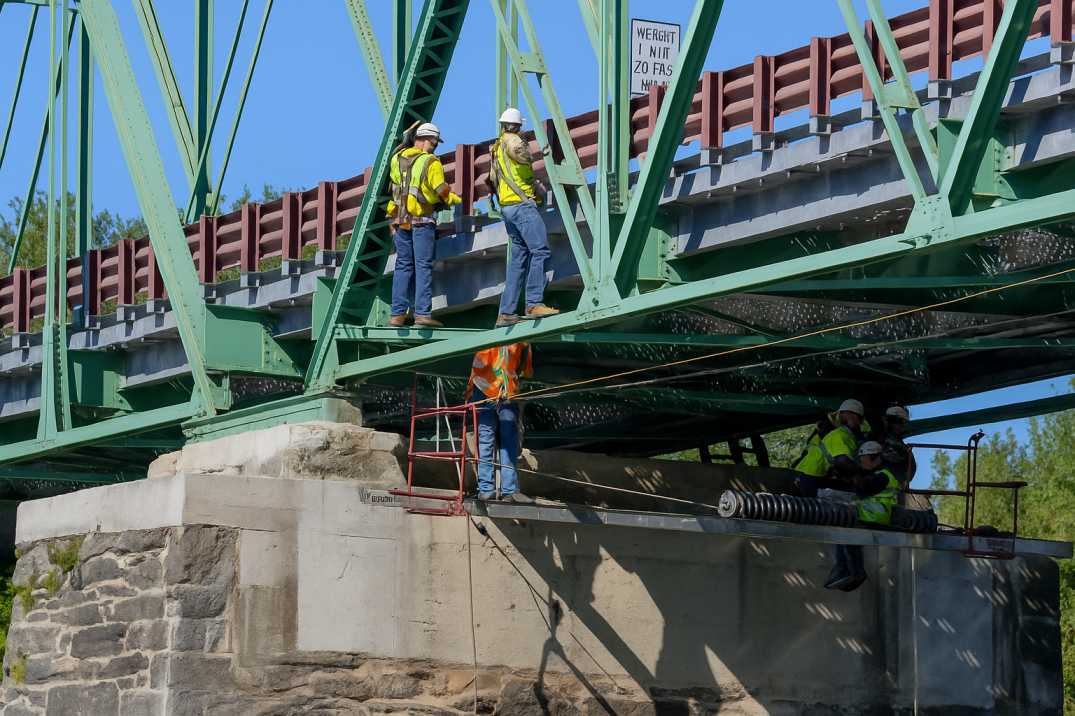Contact Us
RoadVision AI
Private Limited
Office No. 308 & 310, B Block
Ansal Chamber - 1, Bhikaji Cama Place,
Near Engineers India Limited (EIL) Bhawan, New Delhi - 110066
© 2024 | RoadVision AI | All rights reserved
Monitoring the condition of bridges is central to safe and sustainable road asset management Canada. Bridge decks, in particular, are highly vulnerable components because they are directly exposed to traffic loads, moisture, de-icing salts, and environmental stresses. The TAC Canada bridge deck monitoring guidelines highlight the importance of systematic inspection, evaluation, and maintenance to extend the service life of structures and reduce risks to road users.
With rapid advancements in digital infrastructure, AI bridge monitoring is transforming how agencies manage bridge deck evaluations. By integrating artificial intelligence into monitoring systems, Canada can significantly improve safety, accuracy, and efficiency while aligning with Transportation Association of Canada (TAC) standards.

The Transportation Association of Canada (TAC) sets best practices for bridge inspection and condition monitoring through its design and maintenance manuals. The primary goals are:
TAC emphasizes a combination of visual inspections, non-destructive testing, and performance-based evaluations. Bridge decks are often assigned condition indices that guide future interventions and funding allocations.
Bridge decks are directly subjected to dynamic traffic loads and environmental impacts. Without regular monitoring, small surface defects can quickly lead to costly structural damage. Deterioration can manifest as chloride-induced corrosion of reinforcement, freeze-thaw damage, surface wear, and loss of skid resistance.
Effective monitoring ensures:
The introduction of AI bridge monitoring offers agencies a scalable way to complement TAC’s framework. Traditional manual inspections are time-consuming and sometimes subjective, whereas AI brings automation, consistency, and predictive capabilities.
Applications include:
Adopting AI-driven systems for bridge deck monitoring delivers measurable benefits for agencies and contractors:
AI also strengthens traffic survey analysis by linking usage patterns with structural wear, supporting holistic asset management strategies.
RoadVision AI is emerging as the best AI road asset management company in Canada by delivering advanced solutions for bridge deck monitoring, pavement evaluation, and safety compliance. Our case studies and expert insights on the blog demonstrate how AI-driven monitoring transforms the way bridge and roadway infrastructure are managed across Canada.
TAC Canada bridge deck monitoring standards provide a strong foundation for ensuring bridge safety and serviceability. However, the integration of AI bridge monitoring systems is enabling agencies to go beyond traditional inspections, offering predictive, precise, and scalable solutions for the future.
RoadVision AI is transforming road maintenance and bridge monitoring with AI-powered solutions. By conducting detailed traffic surveys and delivering high-quality road and bridge condition data, it enables early detection of issues such as surface cracks, deck deterioration, and structural defects. Fully aligned with TAC Canada standards and IRC standards, the platform ensures smarter infrastructure planning, enhanced safety, and efficient road asset management across Canada.
To learn how AI can modernize your bridge deck monitoring strategies, book a demo with us today.
Q1. What do TAC Canada standards require for bridge deck monitoring?
They require regular inspections, non-destructive testing, and condition ratings to ensure safety and serviceability of bridge decks.
Q2. How can AI support TAC bridge deck standards?
AI automates inspections, improves accuracy, and provides predictive insights that align with TAC guidelines for monitoring and rehabilitation.
Q3. Is AI bridge monitoring cost-effective?
Yes, AI reduces manual inspection time and prevents major repairs by identifying issues early, making it highly cost-effective.